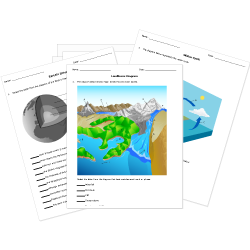The diagram shows three layers of rock. It also shows a fault in the rock layers. The arrows show the directions the rock layers moved along the fault.

The table shows the order of events that changed the landscape in the diagram over time.
| Event Order | Landscape Changes |
|---|
| First | bottom rock layer formed |
| Second | middle rock layer formed |
| Third | top rock layer formed |
| Fourth | fault formed |
Which evidence best supports the claim that the fault was the last event?
-
The fault cuts across all three rock layers.
-
The fault cuts across only the top rock layer.
-
The fault cuts across only the bottom rock layer.
-
The fault does not cut across any of the rock layers.






